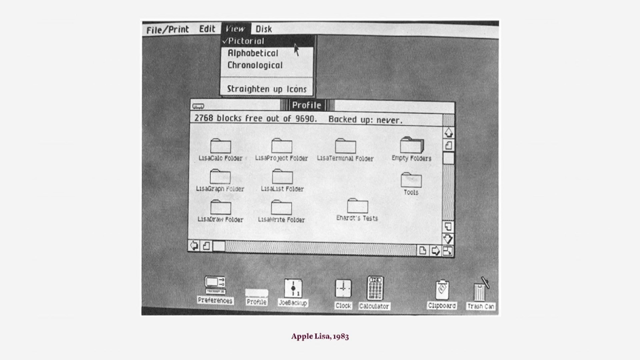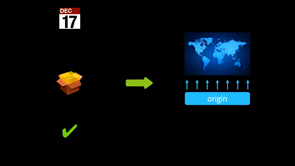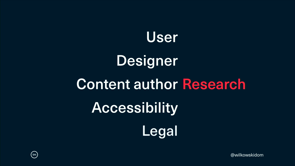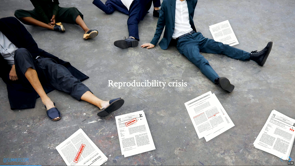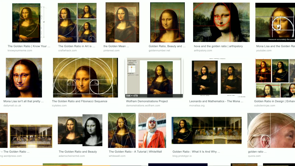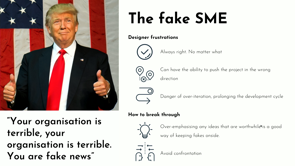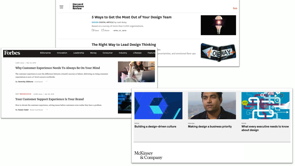Creating impact by scaling four peaks

(upbeat electronic music) - So, I walked around the room, and obviously many people didn't know that there was a last minute speaker replacement. So a few people said, "Oh, you're gonna talking about animation?" And I said, "Well, probably the best I can do "is try to be as animated as I can in this talk, right?" I know some of you were expecting a slightly different talk, but I hope that I can entertain and provoke you for the next few minutes.
I haven't attended the rest of the conference, I know it's good because a number of people have come and told me that it was, the last two days has been fabulous, but actually I probably didn't need to hear that from them, I know it's good because you're still here late on a Friday, right? So, John asked me to talk about how designers might have impact, and I love being asked to talk about things like that because it forces me to go back and really think, and it forces me to reflect on my own career as well. So, my initial premise, my these if you like, around how designers can truly have massive impact in the world is through large organisations, right? Whether they are government, or non-profit, or corporations. Some of you are involved in building start-ups, the way you'll have an impact is if that start-up grows and becomes significant in scale as well, right? There are very few people who are able to create a movement outside a large organisation, whether they're a Mandela or a Gandhi, right, it does happen, but if you wanna have an impact, the most effective vehicle to have an impact is to be either within, or involved in influencing a large organisation, so that's the key premise. And so I thought to myself, what is it that a designer truly needs to do to have an impact? And, essentially there are 4, I call them mountain peaks, that each of us, as designers, need to scale.
So I'm gonna walk you through those 4 mountain peaks. And my story starts like this.
There is a magical place and it's called The Oasis of Awesome, right? Now that Oasis of Awesome is the place that you and your organisation arrive at when you are absolutely able to deliver massive impact, right? So now I lead a hundred and twenty five designers at ANZ, and when we think about the Oasis of Awesome for our organisation, right, our version of impact, and our version of the Oasis of Awesome, is that we can understand, truly understand, the needs of our customers, or our users minds, before they've expressed them; that they love us, not because we force them to love us, not because we tell them how awesome we are, but because we're actually doing the right thing by them, and we're giving them what they want.
That our staff are incredibly enthusiastic about being part of our organisation, because it's just a fun place to be.
That our products and services are awesome, recognised as being best in class.
That we have a real bias to action, we have ideas that come from anywhere, not just within the organisation, but outside, and lots of little bets have massive payoffs. So when we think about our Oasis of Awesome, it looks like that, but if you think about the impact that you wanna have in the organisation that you're in right now, or the impact that you wanna have in the world, it might be through a different organisation, you might have a different definition of the Oasis of Awesome.
Now, there are, if you think about organisations that have arrived at the Oasis of Awesome, you could probably name a number, there are many more organisations, certainly that are on the slide, and I assume that some of you would claim that the organisations that you're in have already arrived at the Oasis of Awesome, and are doing some incredible things in the world. For us, when we measure the Oasis, when we measure impact, it's pretty straightforward, right? For us, it is, you know, that the organisation is profitable, that we have happy customers and happy staff, and again once you define what impact means for you, you might have slightly different ways of measuring it. But, in order to ensure that you achieved impact, you have to actually measure what it is that you've done. But it's not so easy to get to the Oasis of Awesome, right, because most organisations, government, again, government, non-profit, large corporations, small corporations, are actually quite comfortable being in the cosy, warm, Swamp of Status Quo, right? It's actually pretty comfortable there, and it's a place that we're all familiar with. What we don't know I there are piranhas, and crocodiles lurking beneath the water, that at some point are gonna pull us down.
And so usually, we need a little bit of a nudge to actually crawl out of the Swamp of Status Quo. Now that nudge sometimes comes from people within the organisation who shout loud enough, usually it comes from external factors, right, whether the world changes, people's taste change, there's some crisis in the world, you've heard about a few, obviously things that the likes of Twitter would see. So there needs to be some kind of nudge to have the energy to crawl out of the swamp. If you think about yourselves personally in the status quo that you might be in in your own lives, right, you also might need a little bit of a nudge to change, and get to a different place.
And so, the first part of climbing out of that swamp, is what I call the Ascent of Self-Awareness, right? Again, whether you're an individual trying to change, or whether you're an organisation, there's an incredibly difficult climb, that involves reflecting on how bad the Swamp is, even though it was pretty cosy, and starting to think about maybe there's a better place. And so, when I reflect on all the time that I've spent working with a range of organisations, when I was with IDEO we worked with the likes of the Apples and the Nikes, and the Pfizers, and the Mattels, and the US Government, and universities, all of whom were actually trying to change and get to the next level; and when I reflect on the most difficult part of the change, it wasn't actually doing the change, it was this climb to get to the point where the entire organisation, and the leadership of that organisation realised that they actually needed to change. It's really difficult to do that.
At some point, you get enough people who have this commitment, and this sense that they need to get away from the Swamp, and they start to figure out where they might wanna go, that they reach what I call a Summit of Commitment, right? And if you think again about some personal change that you need to make, habit you need to change, there is a point where you have the conviction, and you go "I don't wanna go back to the swamp, "and I'm going to work incredibly hard, "regardless of what it takes to actually get to the Oasis, "and I can now start to describe "what that Oasis might look like." In the case of large organisations, that usually involves either replacing a CEO, or a Prime Minister, it means replacing a whole leadership team, and it means having enough people in the organisation that actually make stuff happen, to have that commitment, and have the resources available, and have leadership that are prepared to crawl over broken glass to actually make that change happen, 'cause the change is really hard.
When you get to that point of conviction, I actually think that the change itself, even if it's a massive complex change, is actually easier than the difficulty of getting to the point of being committed, right? So the last piece of getting to the Oasis, I call the Run of Transformation, right? Now I've made it look like quite an engaging kinda downhill ski-run, but there are a bunch of rocks and trees that will floor you on the way down, but there are also a few rewards and treasures as you move closer and closer to the Oasis. So this picture is my thesis on change, right, regardless of whether it's you as an individual, or a government, or a massive corporation.
Now, I didn't wake up one day and decide that I wanted to work for a bank, I'm a mechanical engineer, I started life designing bits on cars, I had the good fortune to go and work in Silicon Valley, and then run the China office of IDEO, and I've spent a lot of my life making stuff. I was part of the team that designed Barbie's Dream Home. I worked on the second generation Appl iMac. I was involved in some of the early concept PC's that inspired new functionality for Bill Gates directly. I was involved in helping teams think about straightening black women's hair.
I was involved in helping design really cheap, efficient, manually operated pumps for poor farmers in Africa.
I've been involved in all sorts of projects from the sublime to the ridiculous, and the last thing I thought I would ever do is work for a bank, right? But at some point I realised that if I wanted to truly have a substantial impact on a lot of people, I need to start to think about working in places that I would never expect.
And the more time I've spent in financial services, as one example, the more I realised that if ever there was a place that one could have an influence, and have a positive impact on many peoples lives, that would be a place for me; but I've had a few goes, I've had a few bites at the cherry, I spent 5 years at Westpac, and I had a lot of fun there; and it was through my successes and failures at Westpac, that I've started to realise what it took to truly have the kind of impact that I really genuinely wanted to have, inside a big corporation.
And again, it feels like when you look at where you are right now, think very carefully about where your organisation is, and whether you have the capability and the skills and the credibility to influence your organisation to move up that curve. So, that is the first mountain peak that you need to scale if you want to achieve impact, and so the question I would ask is, where your organisation is on its journey to impact. So we're gonna do a quick little exercise.
I want you to spend just a moment thinking, you've probably got the answer to this one already, where your organisation is right now on its journey; whether your organisation is still in the swamp, and is totally clueless that it's incredibly far from it being anywhere near having an impact; whether you're starting to see your leader, or the leadership team, or the organisation, crawl to the point where they're getting a sense that maybe there's a different way of doing things, climbing up that Ascent of Self-Awareness; whether there's a real conviction and commitment to change at the Summit of Commitment; or whether you guys are well and truly making the changes that need to happen, and you're starting to build momentum; or frankly you're in a place where you are enjoying the date palms, somebody's peeling the grapes and fanning you, as you're lying on the, at the Oasis of Awesome, and everything you do is just absolutely fabulous and having an impact.
Take a moment, think about where your organisation is, and then just share that with the person next to you for a second.
(audience talking) Okay, okay I'm gonna make this very quick.
So, show of hands, show of hands, who is fat and happy in the Oasis of Awesome? Raise your hands.
Maybe I should have said, who is svelte and good-looking and in the Oasis of Awesome? No one's in the Oasis of Awesome.
(woman calls) Okay - [Woman] Sorry I would have-- - Okay, tell us! - So I work for a consultant, and we consult on these kind of stuff, so clearly we did so much. - Okay, okay.
That's excellent, what consultancy is that? Or get it-- - Redify - Sorry? - Redify. - Redify, okay well round of applause for Redify. (audience applauds) That's great, okay. I would say you're gonna be getting a lot of résumé's. So, how about, I'll just flip to the other extreme, who is fat and happy, and treading water, in the Swamp of Status Quo? Show of hands.
- [Woman In Black] I wouldn't say I'm happy there. - Okay, okay. (audience laughs)
And you're not, you're very svelte so that's good. - [Woman In Black] I work for the other bank. - You work for the other bank? Okay, maybe you'll send me a résumé, okay, okay. So, Ascent of Self-Awareness? Show of hands.
Okay, we're starting to see a few more hands. Actually, be interesting to have the Swamp and the Oasis go and have lunch together, and see what, you know. Maybe you can fast-track, or maybe you can pull her back down, I don't know. (audience laughs)
Okay, who is it at the Summit of Commitment? Show of hands.
Okay, so Run of Transformation? Okay, now I noticed there are a whole bunch of people that didn't raise their hands at all.
Is that because you're not aware or-- - [Man] Unemployed! - Unemployed, okay. (audience laughs)
So then you should totally be in the Oasis of Awesome, right? So, anyway, good reflection.
The point of this exercise is, if you wanna have an impact at scale, the first thing you need to do is figure out where's the organisation, because I can tell you it is ridiculously hard to join an organisation that doesn't get it.
And as much as you might wanna jump up and down and try to persuade people because you can see things that are so clear to you, that no one else can see, it's gonna fall on deaf ears, and so I hate to depress you on a Friday afternoon, but if you are on the left-hand side of the curve, unless you have made it, and you might be, you know, pretty centre in your organisation, or have a lot of sway, I would suggest to you, that if you genuinely think that you're not gonna move the dial, maybe you're in the wrong place.
Okay, mountain peak number 1, let's go to number 2. I'm now gonna take you to Japan, our friends in Japan have had a lot of impact on many incredible things in the world, and one of the vehicles that they've used to do that is large organisations, and they are the masters of org structure, and hierarchy, okay, and unfortunately, as much as we're moving to different models of organisational structures, there is always some form of hierarchy.
It's kinda the way we're wired, there's some good things about it, there's some really shitty things about hierarchy, but that's kinda the way the world works.
So this is the second mountain peak that you need to scale, and the question you need to ask yourselves is, where in the hierarchy of the organisation that you work for, does the most senior person, who really gets design, work, right? Are they the CEO? Are they the executive team? Or they at the lower levels of the organisation, or are they kinda way down there, right? Who is the most senior person that gives you the air cover, and the resource, and defends all the delicate stuff that takes and incredibly long time, to get to the point where it's magnificent? 'Cause it's generally you're not magnificent the first time, and most people are ridiculously impatient and don't get it anyway, right? So ask yourselves, where's that person? Okay? So the second peak, where is design in the hierarchy? And again, ask yourself, if you really wanna have massive impact, and the person who is enabling you, and giving you your air cover, isn't high enough in the organisation, are you really in the right place? Now I wasn't intending to depress you, but these are important, if you truly want to have any impact, you gotta think about these things, and I've seen so many designers who are ridiculously passionate, and talented, but yet they are so frustrated because they can't understand why the world doesn't see what they see; and what I'm hoping to help you guys do, if you are frustrated and you can't see why, these might be some of the reasons, okay? Now I'm gonna take you to Switzerland.
This is the third mountain peak.
And if we think about organisations, and whether they truly, truly get design, and will enable you to have an impact, you've gotta ask yourself whether they actually understand what design is, it's kind of a fuzzy term, right? And if I had to ask all of you what design is, you'd all have a very different answer, right? So we don't, as designers, we don't really do ourselves any favours.
You know, if you say, "What is accounting?" You can go and look up what it takes to be a CPA, it's pretty straight forward, right? It's still a lot of work, you be a doctor, right, a lawyer, but to be a designer is kind of fuzzy and fluffy, and therefore very difficult for people to understand, 'cause we don't even have an agreed definition ourselves; and so, I think one of the best ways of making sense of all of this is the work that Patrick Buchanan, at Carnegie Mellon University did around the Four Orders of Design, and I use this often when I do talks to a lot of corporations, and certainly within ANZ; because when you ask most non-designers what they think design is, they'll have some answer that relates to aesthetics, right? Something beautiful, and pretty, and it's the crayons department, right? It's the lipstick on the pig, right? And so, in Buchanan's words the first order of design, if you're not, I'm sure that most of you are, is what he called signs and symbols, right? The visual stuff, right, which is super important, super critical, but most people in the world think that that's all design is, right? It's definitely that, and that's definitely incredibly powerful when done well, but it is also other things, right? And so, it's also about objects, and artefacts, and things, and buildings, and the seats that you're sitting on, and the cars that you drive, right? The physical world, your mobile phones, the physical mobile phone.
But again, when you think about where most of you are, and what most of you do, you're in the third order of design, which is interactions, services, and experiences. It's the stuff that we don't see, and it's the stuff right now, that in the world is pretty shit, because most people who are involved in creating those things, have no clue about design, right? Including financial services.
And then, there are a very few number of enlightened individuals who know that that's all incredibly powerful, and can have a massive impact on people's lives, but design can do even more, and that's solve massive systemic problems, and massive wicked problems, right? And frankly, the people who can have so much impact on those kinds of wicked problems, are actually the same people who've spent a lot of their lives doing all of that, because they've trained themselves to solve problems and think, you know, in a very unique, and a very beautiful way, and clearly the world is struggling with a lot of these wicked problems 'cause the people who are trying to solve them haven't done a lot of that, right? So ask yourselves, the organisation that you're in, this is the third mountain peak, what is your organization's perception of design. Now the reason that I'm at ANZ is because I was brought in by a woman by the name of Maile Carnegie, who used to run Google, and she herself was headhunted from running Google, to come and help ANZ transform and build a digital capability.
And so, when I think about what I needed to tick off, to decide on whether I wanted to work there, was all of those things; where is the organisation on it's journey, and they were well and truly, I spent a lot of time with the CEO, Shayne Elliott, they are well and truly at that Summit of Commitment. Where in the organisation is the person that's gonna give me my air cover? That person is this close to the CEO, and the CEO gets it, is incredibly supportive of design, and I believe that he genuinely cares, and will crawl over broken glass to make it happen, right? And does the organisation, what do they think of when they think about design? Well we've actually applied design to solve some of our internal challenging problems, like we spent nine and half billion dollars every year on our expenditures because we're a big company, and it's really hard to do, and if any of you have done an annual budget for the organisation that you're in, it's a shit fightt, it's like the Hunger Games, right? And so they said, you know what, there must be a better way for us to spend nine and a half billion dollars, maybe we can tackle it like a design problem, right? That's an example of an organisation that truly gets the power of design.
We do some incredible stuff in the visual space, we do some incredible stuff in the design of end-to-end service experiences, creating new financial products, applying design to improving the wellbeing of our staff, right? But the organisation and the leadership actually get what design means, right? So I would ask yourself, in your organisation do they get what design is, or do they still think that it's lipstick on a pig? Okay, so you've now scaled 3 mountain peaks, and I'm about to show you the last of the mountain peaks that you need to scale, and I think this one is the most important, by far, right? And it's yourself.
This is about you actually preparing yourself to have the level of skill and capability, and passion, and grit that's required to actually have the kind of impact that I think you all get up in the morning to try to have, right? And so, we spend a lot of time at ANZ actually going back to first principles, and thinking about what is it going to take for us to build the world's best design community? And in order to do that, we had to go back and start to think about what, what are the elements of a really awesome designer? Because we couldn't go and find, you know, the design accreditation that tells us what that is. So we spent a lot of time, we called our friends at IDEO, and we called our friends at Facebook and Pinterest, we've gone to Stone Yamashita, we've gone to lots of organisations to understand what they do to try to characterise what good looks like from a design perspective; and even then, we felt like they weren't quite there yet. So we've spent a fair bit of time actually building out a way to really unpack all the elements of what a good designer needs to have, and we've gone a step further and start to think about what's their journey to mastery? What does a novice look like? What does a fluent practitioner look like? And what does it take to be Yoda, in any one of the range of hard and soft skills that you truly need, to be an awesome designer that has an impact? So I'm gonna share a few of those, and not surprisingly, before you get anywhere near skills, the first thing I would challenge you to do, is to think about what it is, what's your own personal purpose? Right? There are a lot of designers who are passionate, they have incredible talent, they wanna change the world, but when you say them, "What does that mean?" They haven't actually taken the time to think about what they stand for.
They usually know what they hate, right? It's actually really easy for them to tell you all this shit that they don't like, but to actually pause, and I would challenge you to really think about what it is you stand for, why you get up in the morning, and the kind of impact you wanna have.
Otherwise, you're basically going to do the Alice in Wonderland, and if you don't know where you're going, any road will take you there, okay? Once you start to think about where you want to go, then the most important skill, that I think a designer needs, is what I call niceness, right? Niceness, I have to say, and I was just going through, I just came from performance reviews with my team over the past couple of days, the single biggest super power that you need to master, and I'm sure that you are all fabulous, none of you are assholes, right? Is niceness, because I can tell you right now, that it takes years and years and years to master any one of a number of skills, and you're gonna fail along the way, and you're gonna mess up along the way, and if you are nice to other people they will reach out to you, and they will hero you, and they will lift you up, and they will listen to you, and they'll give you an opportunity to have the impact that you wanna have, right? So don't be an asshole.
Once you've mastered niceness, then focus on your craft, right? And focus on your craft even if you're in an environment that you really don't think is gonna move the dial and have an impact, but if you think it's a place where you can work your muscles, and actually get good at the craft of design so you don't have to compensate for shitty design by being a really good talker, then stay in that place. Don't look for the place where you think you're gonna have an impact, where you haven't worked your muscles of the craft, okay? Take the time to do it, and do it again, and again, and again, and get really good so you don't have to say a word, because your work speaks for itself.
Now, being designers, we want everything to be perfect, and magnificent, and beautiful, and in the words of Steve Jobs, "Lickable". Right? Lickable, but it doesn't happen instantaneously. I spent 6 months with a lot of all-nighters, working on a component of the second generation Apple iMac, and I can tell you, the amount of time and effort that Apple spends on experimentation, and prototyping, and failure, is remarkable, and they embrace it, right? And equally there's a point where even Apple decides they just gotta get something out the door, and it's not what they would consider to be the perfection that we all think it is, but they just have to get it done, and they know there's always another time.
So, pragmatism means just sometimes the best design is the design that actually is released, not the thing that you agonise over that's beautiful, but never sees the light of day, and that alienates all your colleagues, or that's impossible to achieve, right? But, you also need to be persistent, you need grit, and you need to make sure that you don't compromise in the long run for where you really wanna get to. Even if there are bits of compromise along the way, that you're back for more, and you don't give up until you've actually had the impact that you wanna have. And then all of that ladders up to leadership, right? At some point, find opportunities to engage people around you, and more, and more, and more people around you, to the point where you actually have a large cohort of really willing people, who bring all of their awesomness, from all of their different skillsets to bear on actually helping you deliver the kind of impact that you wanna deliver, right? And if you can do all of that, then you will scale that fourth peak, which is your journey to design mastery.
So ask yourselves really, where are you on that personal journey to design mastery, and I genuinely recommend that's the primary one you focus on, you wanna have an impact? Start with scaling that first mountain peak, right? Your journey to mastery.
So, to nit it all together, my little thesis on having an impact, ask yourself where is your organisation on it's journey to impact, right? Really good question to ask, it's the kind of question you should actually go and hang out with your CEO, your leader, right, your founder, your founding team, your executive team, if you're on that team, ask them that very question, right? Take a really close look, right, and it might not be the person that has design in their title, sometimes they do more damage than good, right? Ask yourselves who is truly the person that gives you the kind of air cover that you need, and where do they sit in the organisation? Does your organisation understand that design is more than lipstick? And if not, help them see that there's a helluva lot more to design.
And then finally, ask yourself where you are on your own personal journey to impact.
And if you do all those things, you're on the path to impact.
I'm gonna make it even simpler, I've got one post-it note that tells the story, right. So, final thought, the real journey to impact actually looks like this.
Thank you very much.
(audience applauds) (upbeat electronic music)







